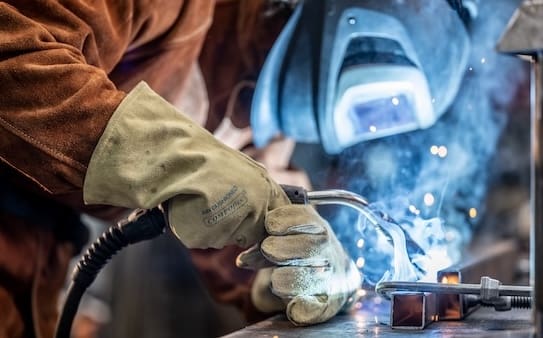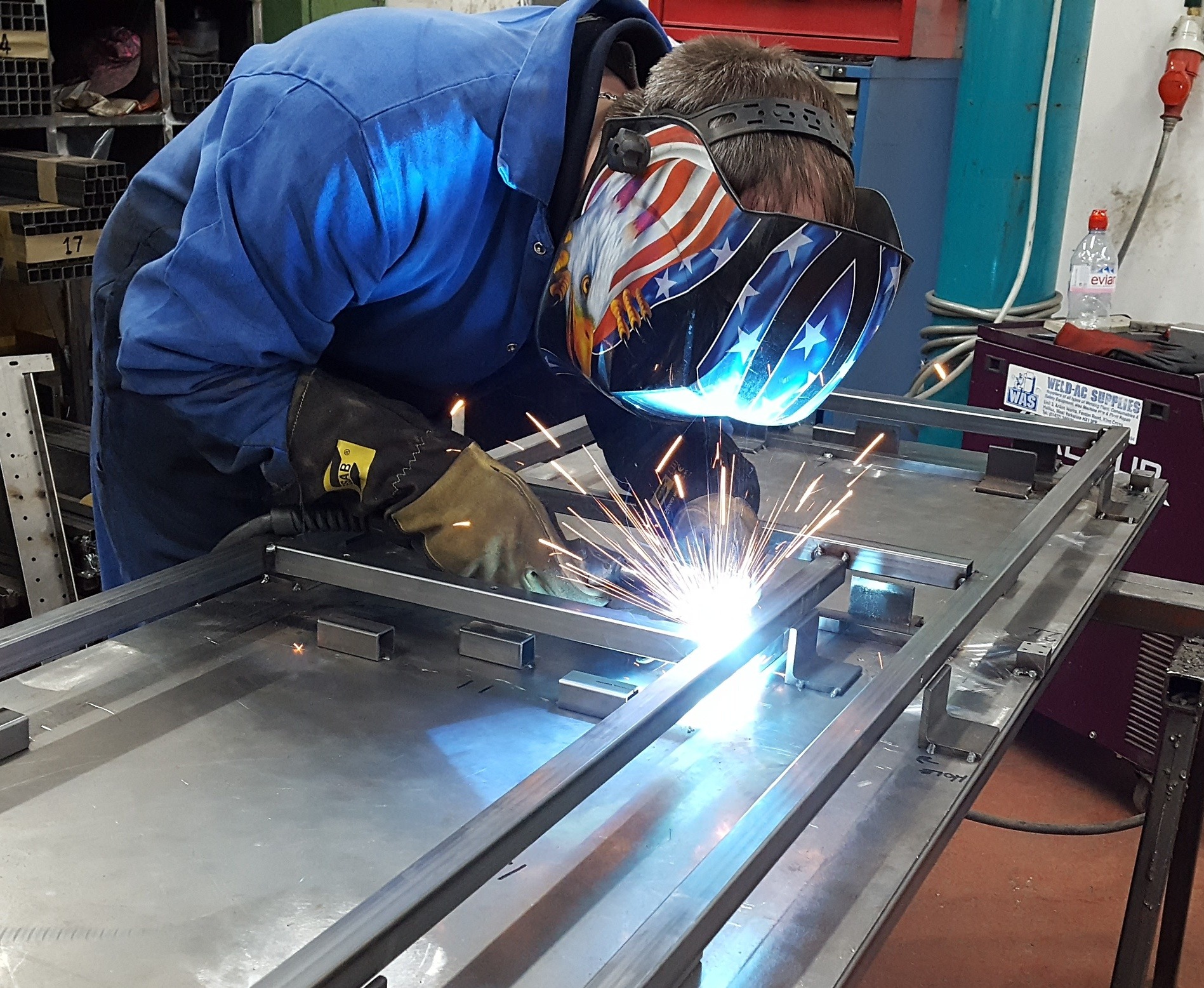All About Welding: Trick Insights Into Techniques and Best Practices for Success
Welding includes a selection of methods, each matched for specific materials and applications. Recognizing these approaches, such as GMAW, SMAW, and TIG, is crucial for achieving optimal outcomes. The appropriate devices and safety practices can not be ignored. As preparation and repairing play important functions in the welding process, grasping these components can significantly enhance the top quality of the last item. What are the key factors that guarantee a successful weld?
Recognizing Various Welding Strategies
Welding methods encompass a variety of approaches, each fit to particular applications and products. Amongst the most common techniques are Gas Metal Arc Welding (GMAW), Secured Steel Arc Welding (SMAW), and Tungsten Inert Gas Welding (TIG) GMAW, additionally referred to as MIG welding, is popular for its rate and adaptability, making it ideal for thin materials. SMAW, or stick welding, is preferred for its simplicity and performance in outdoor settings, specifically with thicker metals. TIG welding provides precision and control, making it appropriate for elaborate work and non-ferrous steels (Belgrade Fabrication). Each technique has its one-of-a-kind benefits and factors to consider, allowing welders to pick the best method based on the project's demands, material kind, and desired outcomes. Comprehending these strategies is necessary for effective welding
Crucial Welding Devices and Devices
While numerous welding techniques call for details skills, the ideal devices and tools are equally crucial for attaining high quality outcomes. Essential welding devices includes welding makers, which vary depending on the strategy-- such as MIG, TIG, or stick welding. Protective gear, including headgears, aprons, and gloves, warranties security and comfort throughout the procedure. Additionally, clamps and components assist protect products in location, making certain precision in welds. Consumables like welding poles, wire, and securing gas are additionally vital components that influence the top quality of the weld. Additionally, tools such as grinders and cutters assist in surface area prep work and post-weld finishing, adding to a professional result. Purchasing premium equipment eventually improves the effectiveness and effectiveness of welding projects.
Safety And Security Practices in Welding
Proper safety methods are crucial in the welding market to safeguard workers from possible risks. Welders need to put on appropriate personal safety tools (PPE), including headgears with correct shading, handwear covers, and flame-resistant garments. Ample air flow is crucial to reduce exposure to dangerous fumes and gases created during the welding process. Furthermore, employees must be learnt the correct handling of welding equipment to avoid accidents. Fire safety steps, such as maintaining flammable products away from the welding location and having fire extinguishers easily available, are necessary. Normal evaluations of tools and work spaces can aid identify potential hazards prior to they result in mishaps. By sticking to these safety methods, welders can produce a safer working setting and reduce dangers associated with their profession.
Readying Materials for Welding
Preparing materials for welding is an essential step that greatly influences the top quality and integrity of the end product (Belgrade). Appropriate prep work involves cleaning the surface areas to eliminate impurities such as oil, dirt, and corrosion, which can compromise the weld. Methods such as grinding, sanding, or using solvents are commonly used to accomplish a tidy surface area. Furthermore, ensuring that the products fit together comfortably is essential; voids can cause weak welds. It's likewise crucial to think about the positioning and positioning of the elements, as this will certainly impact the simplicity of welding and the last result. Ultimately, picking the suitable filler product and making certain compatibility with the base metals is essential for achieving solid, resilient welds
Tips for Achieving High-Quality Welds
Attaining premium welds requires focus to detail and adherence to finest methods throughout the welding procedure. Proper joint prep work is essential, making certain surfaces are tidy and totally free from impurities. Choosing the proper filler product and welding technique based upon the base steels is vital for suitable bonding. Keeping regular traveling rate and angle while welding can advertise and stop flaws harmony. Additionally, regulating warm input is important; excessive warm can result in warping and deteriorated joints. Routinely inspecting the welds during the procedure permits for prompt adjustments if required. Utilizing proper post-weld treatments, such as cleansing and stress and anxiety relief, can improve the durability and stability of the weld, inevitably ensuring an effective outcome.
Troubleshooting Usual Welding Issues
Welding often presents obstacles that can impact the quality and stability of the end product. Common concerns such as porosity, inconsistent weld beads, and getting too hot can occur, each requiring particular repairing methods. Comprehending these problems is important for welders to enhance their abilities and achieve ideal results.
Porosity Troubles Described
Although porosity can typically be ignored, it continues to be an important problem in welding that can jeopardize the integrity of a completed item. Porosity refers to the visibility of small gas pockets within the weld bead, which can weaken the joint and lead to early failing. This issue usually develops from pollutants, moisture, or inappropriate protecting gas insurance coverage throughout the welding process. To mitigate porosity, welders must verify that the base products are dry and tidy, use suitable shielding gases, and maintain consistent welding specifications. On a regular basis evaluating the tools and atmosphere can also assist recognize potential problems before they show up in the weld. Attending to porosity efficiently is essential for attaining strong, sturdy welds that satisfy high quality standards.

Inconsistent Weld Beads
Inconsistent weld grains can significantly impact the high quality and strength of a finished item. Numerous elements contribute to this issue, consisting of inappropriate traveling speed, wrong amperage setups, and inconsistent electrode angles. When the welder relocates also swiftly, a grain might appear slim and do not have infiltration, while relocating too slowly can create extreme build-up. Furthermore, making use of the wrong amperage can lead to either undercutting or too much spatter, both of which compromise weld honesty. The welder's original site technique, such as irregular torch movement, can also lead to unequal bead look. To alleviate these issues, welders visit this site must focus on keeping stable, controlled movements and ensuring appropriate equipment setups to accomplish harmony in their welds. Consistency is crucial to achieving trustworthy and solid welds.
Getting Too Hot and Bending Issues
Too much warmth during the welding process can result in significant getting too hot and deforming issues, influencing the structural stability of the workpiece. These issues frequently materialize as distortion, which can endanger alignment and fit-up, making more setting up challenging. Variables adding to overheating consist of the option of welding specifications, such as voltage and take a trip speed, along with the kind of product being bonded. To mitigate these concerns, welders ought to maintain regular traveling speed and suitable warmth input while keeping track of the workpiece temperature level. In addition, pre-heating or post-weld warm treatment can help minimize stress and anxieties created by fast cooling - Montana Mobile Welding and Repair Belgrade Fabrication. Regular evaluation and adherence to best methods are important in avoiding getting too hot and making sure the durability and dependability of bonded structures
Regularly Asked Inquiries
What Are the Occupation Opportunities in the Welding Sector?
The welding sector offers varied job chances, including settings as welders, engineers, teachers, and assessors. Specialists can operate in manufacturing, building, aerospace, and auto fields, gaining from solid demand and competitive salaries in different roles.
How Can I Improve My Welding Speed Without Sacrificing Quality?
To boost welding speed without sacrificing top quality, one ought to practice effective methods, maintain devices, optimize settings, and enhance hand-eye coordination. Normal training and looking for responses can also substantially add to achieving quicker, top notch welds.
What Certifications Are Readily Available for Welders?
Countless accreditations exist for welders, including those from the American Welding Society (AWS), the National Center for Construction Education and Research Study (NCCER), and different industry-specific companies. These qualifications boost employability and show ability effectiveness.
How Does Welding Impact the Residences of Metals?
Welding affects the properties of steels by changing their microstructure, which can cause modifications in strength, solidity, and ductility. Extra resources Heat input and cooling rates during the process substantially affect these material qualities.
Can I Bonded Dissimilar Metals Together?
